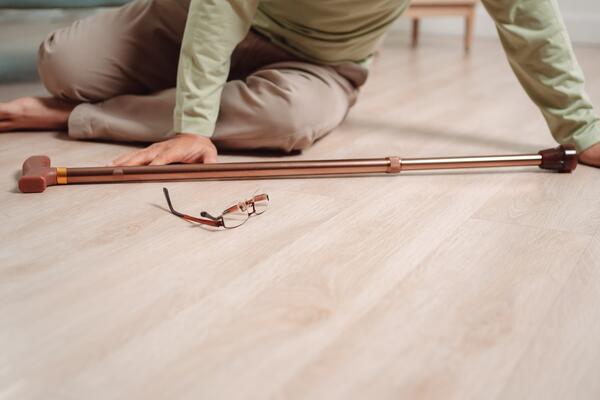
Design Flaws vs. Human Error: What Really Causes Most Nursing Home Falls?
In 2023, more than 40,000 older Americans died from falls, according to the Centers for Disease Control and Prevention. Many of those incidents happened inside nursing homes, places expected to protect residents from exactly these kinds of accidents. As facilities face growing scrutiny, a central question emerges: are these falls largely the result of unsafe design or do human factors play a bigger role?
The Scale of the Problem
Nursing home residents live with higher risk factors for falling than older adults in the general population. Some incidents lead to minor bruises, while others result in hip fractures, head trauma, costly medical bills, or lasting disability. In the most severe cases, a fall can trigger a rapid decline in health.
The question of responsibility is rarely straightforward. Poor lighting in a hallway might be an obvious hazard, but a resident’s loss of balance could also be tied to medication side effects. Untangling these causes is complex, and it’s why cases often lead families to seek slip and fall legal representation when they suspect the environment played a role.
When Design Becomes a Hazard
Facility layouts and materials can unintentionally raise the risk of accidents. Common problems include flooring that becomes slippery after cleaning, furniture placed too close together in shared spaces, and bathrooms without enough grab bars.
In older buildings, accessibility features may not meet current safety standards. Narrow hallways, uneven thresholds, or dimly lit entryways can challenge even residents in relatively good physical condition. Seasonal hazards, like wet leaves or ice near entrances, can also catch staff and residents off guard if not addressed quickly.
Human Error and Resident Vulnerabilities
Human factors, however, are just as critical. Residents often face mobility limitations, visual impairment, or cognitive decline. Certain medications can cause dizziness or slower reflexes, increasing the likelihood of missteps.
Staffing issues can also contribute. If a call for help goes unanswered or a resident is assisted in a hurry, safety steps may be skipped. In high-turnover environments, newer staff may lack experience with safety protocols, leaving residents more exposed to risk.
Where the Two Overlap
In many cases, design flaws and human vulnerabilities collide. A resident might navigate their room safely under normal conditions, but a misplaced cord or poorly placed rug could change that instantly.
Even the most attentive staff can’t eliminate all hazards if environmental factors aren’t addressed in the design with safety in mind. Likewise, a perfectly maintained facility can still see falls if resident safety isn’t adequately maintained through proper supervision and support.
Practical Steps That Make a Difference
Facilities working to reduce falls often take a layered approach. On the environmental side, that can mean replacing high-gloss flooring with non-slip surfaces, ensuring consistent lighting, and keeping pathways clear.
From the human side, regular risk assessments help identify residents who need extra support and guide effective fall intervention. Staff training on safe transfer techniques and early recognition of balance issues is a core part of falls prevention.
Some nursing homes are turning to technology and assistive devices for help. Bed rails and chair alarms can alert staff when residents at high risk attempt to stand unassisted, and motion-activated lighting can guide safe movement at night. Still, these tools are only as effective as the response they trigger.
Policy and Oversight
State and federal regulators require nursing homes to report serious patient falls, using the data to track patterns and develop prevention strategies. These records sometimes highlight recurring design issues, such as inadequate bathroom safety features or chronic understaffing during certain shifts.
Public health agencies are increasingly aware of the growing risk of falls as the population ages. National initiatives like the CDC’s STEADI program promote fall-risk screening, medication review, and prevention strategies, and pilot programs in states such as Iowa and Oklahoma are implementing those tools in community and clinical settings.
Why Accountability Matters
If an environmental hazard is identified, the facility can make changes before another resident is injured. If the incident stems from a lapse in care, additional training or procedural changes may be needed.
Families often feel left in the dark after a serious fall. Clear communication from facilities about what happened and what steps will be taken can help restore trust and may prevent wrongful death disputes from escalating to a legal team.
Conclusion
Falls in nursing homes are rarely the result of a single factor. More often, they emerge from a mix of environmental hazards and human vulnerabilities. Addressing one without the other leaves residents exposed.
The path forward requires facilities to commit to safer design, well-trained staff, and open communication when incidents occur. Even the most comprehensive prevention programs cannot completely eliminate falls, but narrowing the gap between what’s possible and what’s practiced can make a measurable difference in reducing fall-related injuries for some of society's most at-risk members.